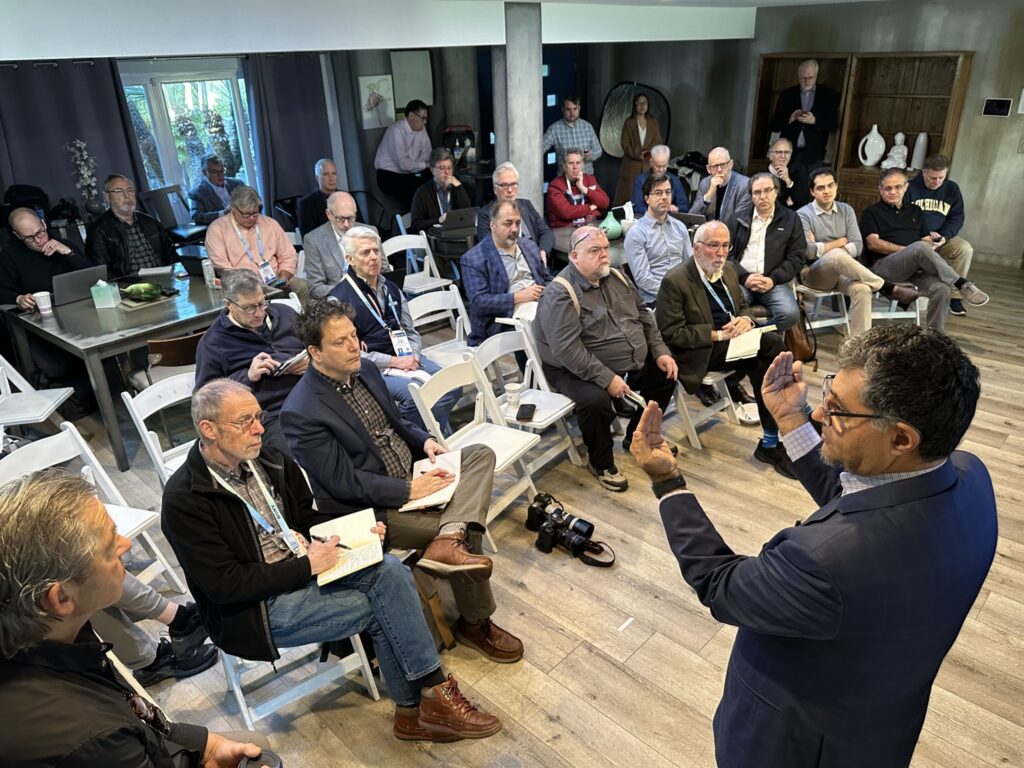Neural Propulsion Systems realizes radar breakthrough
Neural Propulsion Systems has connected some all-important technical dots to develop radar technology that promises Lidar-like resolution and fewer false positives.
The breakthrough comes courtesy of mathematic algorithms that can help advanced driver assistance systems (ADAS) and highly autonomous vehicles detect pedestrians and traffic earlier and at greater distances.
When the NPS software combines with wide-aperture multiband radar, the radar-based systems would also be able to see through physical barriers like vegetation and buildings, or even see around corners.

“The NPS software, which relies on raw inputs from radar hardware, improves precision in automotive applications formerly only obtained through the addition of expensive Lidar sensors and without any weather-related or operational limitations,” co-founder and CEO Behrooz Rezvani said in a press release.
“If you have 20/10 vision, you can see details at 20 feet that people with normal vision can only see at 10 feet,” Rezvani said. “Less than 1% of us have that ability. Our technology is akin to improving automotive imaging from 20/20 vision to better than 20/10 vision.”
Addressing ‘ghost targets’
“Ghost targets” identified by traditional radar-based systems can cause unnecessary emergency braking, he explained in a media briefing. And the false signals can also hide true targets like moving pedestrians.
It’s all based on a mathematics model known as the Atomic Norm framework, which can be traced to magnetic resonance imaging (MRI).
Showcasing the technology at CES in Las Vegas, the company is demonstrating how it compares to existing Texas Instruments 77 GHz chipsets. The software extracts a “point cloud” that the company says will reduce false positives tenfold.
“It’s the equivalent of putting software glasses on the car’s radar vision, so it can see two to three times sooner, clearer, farther, and in all weather conditions,” Rezvani said.
Companies developing autonomous driving systems will be able to expand use cases with the better radar, added Lawrence Burns, an executive advisor to NPS who had also served as an advisor to autonomous vehicle developer Waymo.
News of the model comes just months after the National Highway Traffic Safety Administration proposed rules to boost performance standards for automatic emergency braking (AEB) to better protect vulnerable road users.
“NPS’s technology will help automakers meet NHTSA’s tough new AEB standards safer, sooner and at a lower cost than the alternatives,” Rezvani said.
“Ghost targets” that appear in a vehicle’s path can cause unnecessary emergency braking, he explained in a media briefing. They can also overwhelm true targets like moving pedestrians. People also tend to generate signals that are 100 or 1,000 times weaker than vehicles next to them, said CTO and co-founder Babak Hassibi.
Automotive applications for radar involve particularly complex scenes, he added, referring to the objects with differing geometry, texture and properties. “They have to untangle this reflected scene that comes back.”
Have your say
This is a moderated forum. Comments will no longer be published unless they are accompanied by a first and last name and a verifiable email address. (Today's Trucking will not publish or share the email address.) Profane language and content deemed to be libelous, racist, or threatening in nature will not be published under any circumstances.